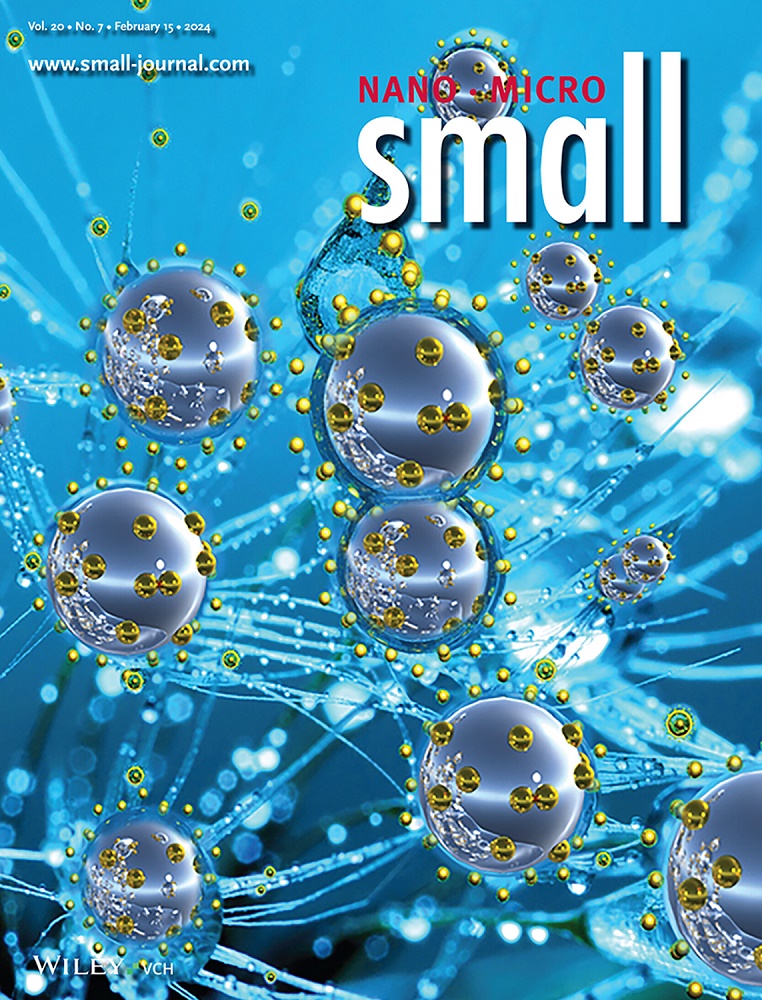"Zn-Iodine" Co-Regulation Induced by Trifunctional Zn2+-Exchanged Electrolyte Additives for High-Areal-Capacity and Robust Zn-I2 Batteries.
IF 12.1
2区 材料科学
Q1 CHEMISTRY, MULTIDISCIPLINARY
引用次数: 0
Abstract
Aqueous Zn-I2 batteries featuring high safety and low cost attract considerable attention for grid-scale energy storage. However, the challenges of Zn dendrite growth, hydrogen evolution reaction, and polyiodide shuttling severely impede their practical application. This study introduces Zn2+-exchanged vermiculite nanosheets (ZVN) as a multifunctional electrolyte additive to optimize Zn2+ solvation structure, facilitating hydrated Zn ion de-solvation via the strong electron affinity of ZVN. Moreover, the in situ formed protective ZVN layer on Zn anode maintains superior ionic conductivity for Zn2+ transportation, enabling highly stable and dendrite-free Zn deposition. This dual mechanism enables a dendrite-free Zn anode with 99.82% Coulombic efficiency over 1 700 cycles in Zn//Cu cells. Simultaneously, the excellent iodine species trapping ability of ZVN effectively inhibits the polyiodide shuttling for improved iodine conversion efficiency. Therefore, the assembled Zn-I2 battery based on polyaniline/I- cathode exhibits a high areal capacity of 1.05 mAh cm-2 and ultra-long lifespan over 18 000 cycles. This study provides an efficient electrolyte additive with a "Zn-iodine" synergistic effect for advanced Zn-I2 batteries.三功能Zn2+交换电解质添加剂对高面积容量坚固型Zn-I2电池的“zn -碘”共调节作用
锌- i2水溶液电池具有高安全性和低成本的特点,在电网规模储能领域受到广泛关注。然而,锌枝晶生长、析氢反应和多碘化物穿梭等挑战严重阻碍了它们的实际应用。本研究引入Zn2+交换蛭石纳米片作为多功能电解质添加剂,优化Zn2+的溶剂化结构,利用Zn2+的强电子亲和力促进水合Zn离子的脱溶剂化。此外,在Zn阳极上原位形成的保护性ZVN层保持了优异的离子电导率,有利于Zn2+的输送,从而实现了高度稳定和无枝晶的Zn沉积。这种双重机制使锌/铜电池在1700次循环中具有99.82%的库仑效率。同时,ZVN优异的碘捕获能力有效地抑制了多碘化物的穿梭,提高了碘的转化效率。因此,基于聚苯胺/I-阴极的组装锌- i2电池具有1.05 mAh cm-2的高面容量和超过18000次循环的超长寿命。本研究为先进的Zn-I2电池提供了一种具有“zn -碘”协同效应的高效电解质添加剂。
本文章由计算机程序翻译,如有差异,请以英文原文为准。
求助全文
约1分钟内获得全文
求助全文
来源期刊

Small
工程技术-材料科学:综合
CiteScore
17.70
自引率
3.80%
发文量
1830
审稿时长
2.1 months
期刊介绍:
Small serves as an exceptional platform for both experimental and theoretical studies in fundamental and applied interdisciplinary research at the nano- and microscale. The journal offers a compelling mix of peer-reviewed Research Articles, Reviews, Perspectives, and Comments.
With a remarkable 2022 Journal Impact Factor of 13.3 (Journal Citation Reports from Clarivate Analytics, 2023), Small remains among the top multidisciplinary journals, covering a wide range of topics at the interface of materials science, chemistry, physics, engineering, medicine, and biology.
Small's readership includes biochemists, biologists, biomedical scientists, chemists, engineers, information technologists, materials scientists, physicists, and theoreticians alike.
 求助内容:
求助内容: 应助结果提醒方式:
应助结果提醒方式:


